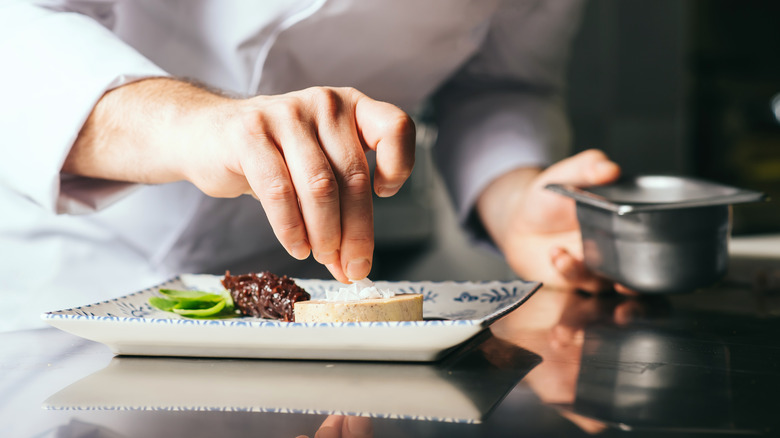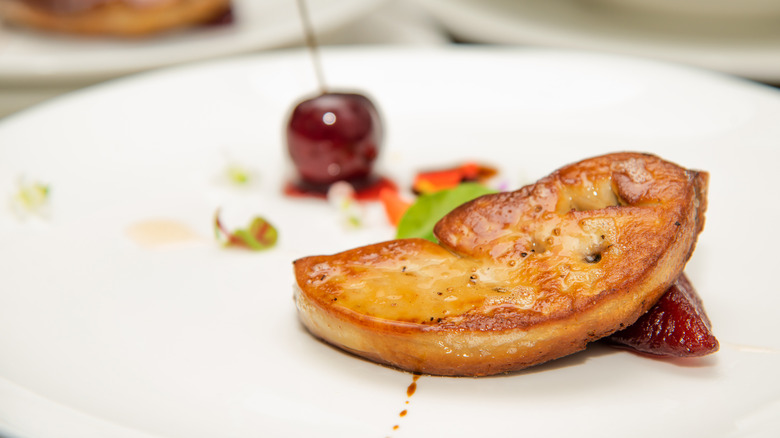The Difference Between Grade A And Grade B Foie Gras, Explained
When you hear the words "fine dining," what comes to mind? A low-lit dining room filled with servers in three-piece suits? Or do you think of foods like caviar, saffron, truffles, wagyu, or chocolates dressed in gold leaf? Today, we're deep-diving into one of the most luxurious foods in the culinary world: foie gras. Foie gras is celebrated by professional chefs including Anthony Bourdain and José Andrés (via Eater). Shinji's in Manhattan's Flatiron District even serves foie gras-infused Cognac with a foie gras tartlet sidecar.
In case you haven't heard of it, foie gras is fattened goose liver, and it's an illustrious French delicacy. Foie gras ("fwah-grah") isn't just a fashionable-sounding name like "Boulevardier." "Foie gras" is French for "fat liver," says The Spruce Eats, which is a fitting moniker. The liver is enlarged to roughly 10 times its normal size via force-feeding, which has earned the delicacy one of the most controversial reputations in the food world. Some parties have been trying to ban foie gras in NYC, but the New York State Department of Agriculture and Markets overturned the ban earlier this month, reports CNN. The dish has endured due to its unrivaled rich flavor and silky, buttery texture. It's often served as a pâté, but when you see the words "foie gras" on a menu, they're talking about a whole intact liver. But, even such a luxurious food item as this has rankings. Here's the difference between Grade A and Grade B foie gras.
It's all about size, firmness, and complexion
According to online retailer Gourmet Food Store, Grade A is the highest quality of foie gras. Its exterior is shiny, smooth, and firm with a uniform white color. It's physically the largest type of foie gras, weighing 1 to 3 pounds with a round, oblong shape. It's free from blood spots, bruises, and other blemishes, and emits a slightly sweet aroma, says Luxury foods purveyor House of Caviar. Grade A foie gras should be prepared as simply as possible, says the outlet, such as seared or sauteed.
Grade B foie gras is still a luxurious gastronomical gem of fine dining, but there are a few distinctions that separate it from a Grade A rating. Grade B foie gras is smaller in size than Grade A, up to 1 ½ pounds, according to Marx Foods. Grade B foie gras also displays visible veins or blemishes, is flatter in shape, and is less firm. Due to its less firm texture, more fat gets rendered out during cooking, which cooks generally try to avoid.
Still, both grades ultimately offer the same taste and are dizzyingly glamorous. But, Grade B foie gras functions better when turned into pâtés and mousses versus plump, firm Grade A foie gras, which functions well as a standalone meal. When presentation counts, Grade A is the move. But, when all you need is that world-famous foie gras flavor, Grade B will do just fine.

